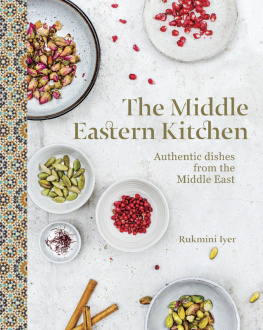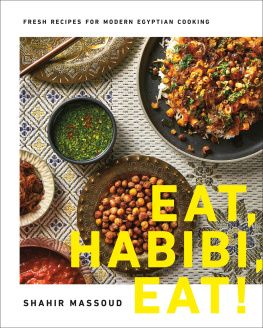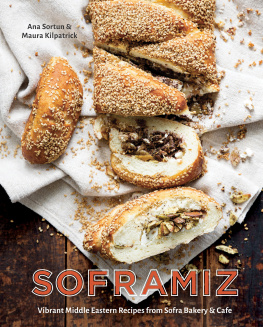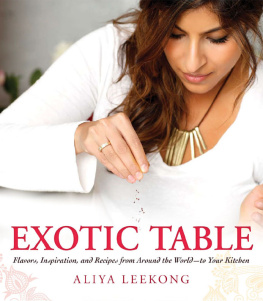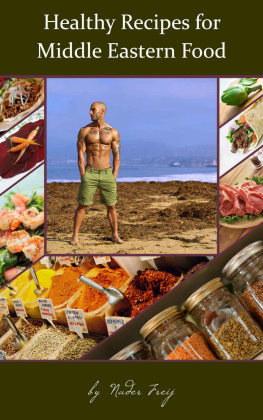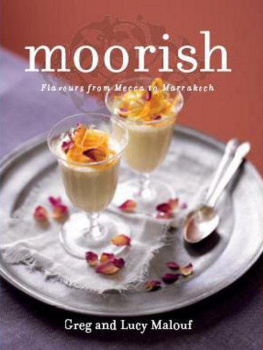Contents
Page List










Copyright 2021 by CHRISTINE SAHADI WHELAN .
Photographs 2021 by KRISTIN TEIG .
All rights reserved. No part of this book may be reproduced in any form without written permission from the publisher.
Library of Congress Cataloging-in-Publication Data available.
ISBN 978-1-4521-8405-0 (epub, mobi)
ISBN 978-1-4521-8245-2 (hardcover)
Food styling by CAITLIN HAUGHT BROWN .
Prop styling by NIDIA CUEVA .
Design by LIZZIE VAUGHAN .
Typesetting by HOWIE SEVERSON .
Typeset in Caslon, Copperplate, and Brandon Grotesque.
Bon Apptit is a registered trademark of Cond Nast. Cream of Wheat is a registered trademark of B&G Foods, Inc. Maldon is a registered trademark of Maldon Crystal Salt Co. New York Times is a registered trademark of The New York Times Company. Stony Brook WholeHeartedFoods is a registered trademark of Stony Brook WholeHeartedFoods. Red Zinger Tea is a registered trademark of Celestial Seasonings, Inc. Tabasco is a registered trademark of McIlhenny Company.
Chronicle books and gifts are available at special quantity discounts to corporations, professional associations, literacy programs, and other organizations. For details and discount information, please contact our premiums department at or at 1-800-759-0190.
Chronicle Books LLC
680 Second Street
San Francisco, California 94107
www.chroniclebooks.com
To Uncle Richie, who taught me to trust my sense of taste and travel the world through food.
CONTENTS
INTRODUCTION
Sumac. Aleppo peppers. Date molasses, zaatar, preserved lemons. Until fairly recently, it required time and ingenuity to track down these staples of Middle Eastern cooking, most of which were rarely seen outside of ethnic markets in communities with large immigrant populations.
How things change! Today, hummus is a lunchbox staple, and pomegranate molasses can be found on most supermarket shelves next to the balsamic vinegar. At Sahadis weve had a birds-eye view ofand perhaps more than a little hand inthe explosion in popularity of the foods and flavors of the Middle East. As New York Citys oldest continually operating specialty food store, weve been importing and selling Middle Eastern provisions and prepared foods for more than a hundred years. We take enormous pride in knowing that we have helped generations of cooks who immigrated from Syria, Lebanon, Israel, Jordan, and beyond keep cherished family traditions alive, while at the same time introducing a new generation of chefs and home cooks to unfamiliar and exciting new flavors.
As the fourth generation of Sahadi to work in the family business, we have found it fascinating to watch the evolution of our customer base. Where we once catered primarily to an immigrant population seeking the raw ingredients for home cooking, we now feed thousands each week from our prepared food counters and cater to a diverse mix of shoppers from every possible cultural background. Weve expanded our offerings to keep pace with changing tastes and food trends, but its the Middle Eastern specialtiesdry goods, olives, nuts, and spicesthat continue to define what makes us unique in a city thats hardly lacking in food choices.
In recent years, Ive seen the public appetite for these flavors grow by leaps and bounds, fueled in no small part by the recipes of acclaimed chefs like Yotam Ottolenghi, Michael Solomonov, and Paula Wolfert, as well as adventuresome cooks perennially in search of the next new thing. I always know when the New York Times or Bon Apptit magazine has published a new Middle Easterninflected recipe because the store is inundated with customers clutching a clipping or peering at their phones as they peruse the shelves looking for ras el hanout or orange blossom water. While Im happy to sell them these trendy new ingredientsmost of which weve been carrying for decadesI know that once theyve busted out that special dish for their next dinner party, those sought-after ingredients are likely to languish at the back of the pantry, forgotten and unused. Ive lost count of the times Ive been asked What can I do with the rest of the date molasses I bought? or What else is Urfa pepper good for?
I wrote this book to answer questions like those and dozens more, with both simple, family-friendly recipes youll want to add to your weekly rotation as well as food prompts and no-recipe recipes that will have you scraping the bottom of those jars before you know it.
Sahadis packages and sells over 150 different spices and seasoning blendsall with their own loyal constituenciesas well as specialty, gourmet, and artisanal products from six continents. But for the purposes of this book, Ive chosen to drill down on a relatively small handful of versatile, essential flavorings and ingredients, and show lots of different ways to use them rather than present a showcase for every single seasoning we carry. I want to be sure you never have to skip one of my recipes just because it requires a special trip to the store or worry that you might end up with dozens of single-use ingredients. All the ingredients Im spotlighting here can be used lots of different ways and in both sweet and savory dishes.
In that same spirit, Ive arranged the recipes in this book by the broad flavor profiles that characterize Middle Eastern cooking: Bright, Savory, Spiced, Nutty, and Sweet, with a range of recipes for every course of the meal in each category. Although its a little bit unconventional to structure a cookbook this way, my hope is that it accomplishes two things.
First, it illustrates how in many cases the ingredients in each of these categories can be substituted for one another or even used interchangeably. For example, if you like the subtle perfume of rose water but not the flavor, orange blossom water will give a similar effect. If youre looking for the citrus zing of pomegranate molasses but dont want to add more liquid to your recipe, a teaspoon or two of sumac or ground hibiscus can help you achieve the same result. Feta cheese, cured olives, and capers all add a savory salty tang to a dish, so if your recipe calls for one and you only have the others, go ahead and substitute. Play around with spice blends like berbere, shawarma, or harissa; in so many cases they can be used exactly the same way, or substitute for other blends, like curry powder and even pumpkin pie spice! Tahini can provide the earthiness and richness of nuts in baking or in salad dressings. You get the idea. By my grouping these ingredients together, I hope you will see the potential for swapping them in and out of recipes as your mood and the state of your pantry dictate.


